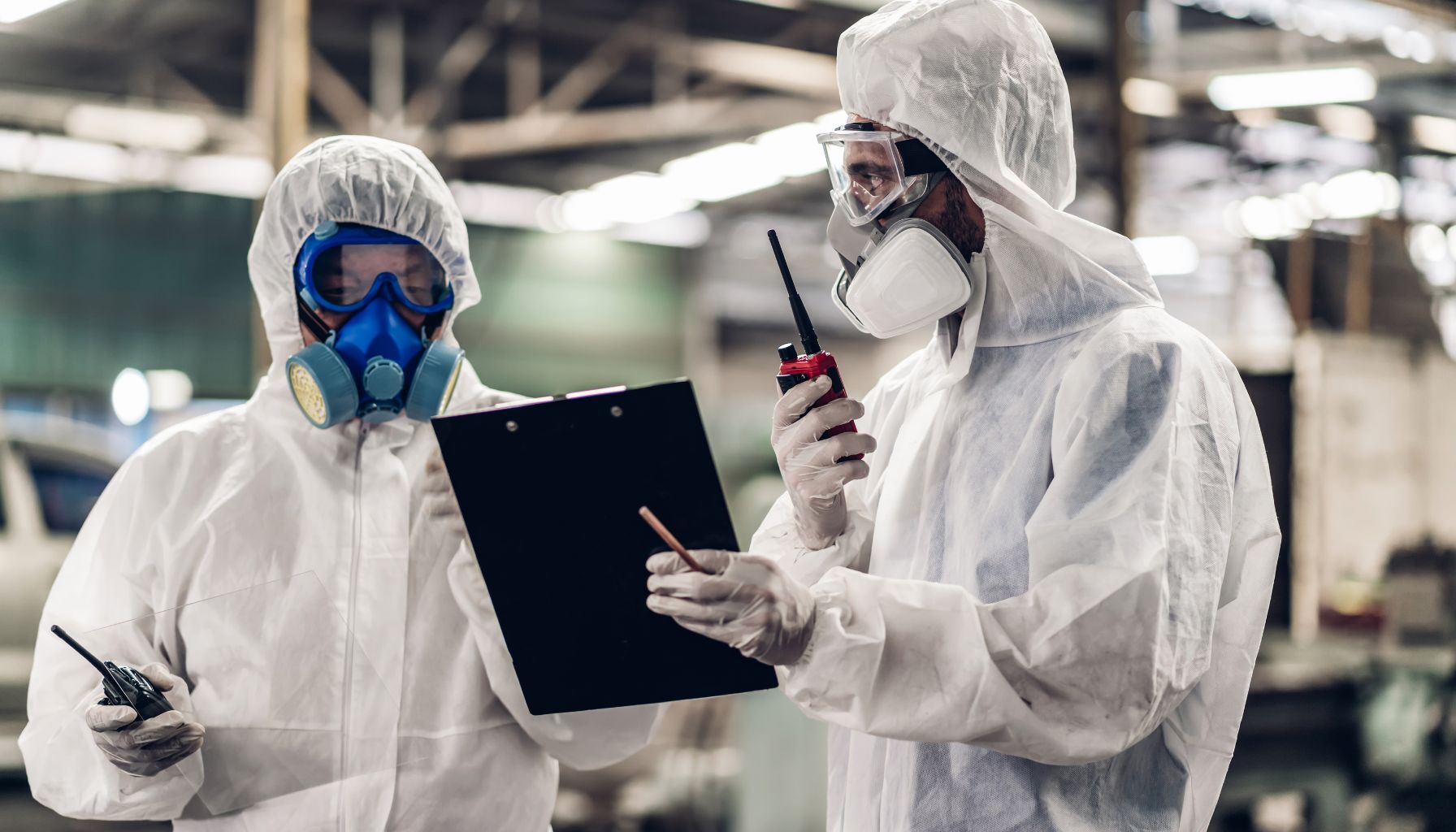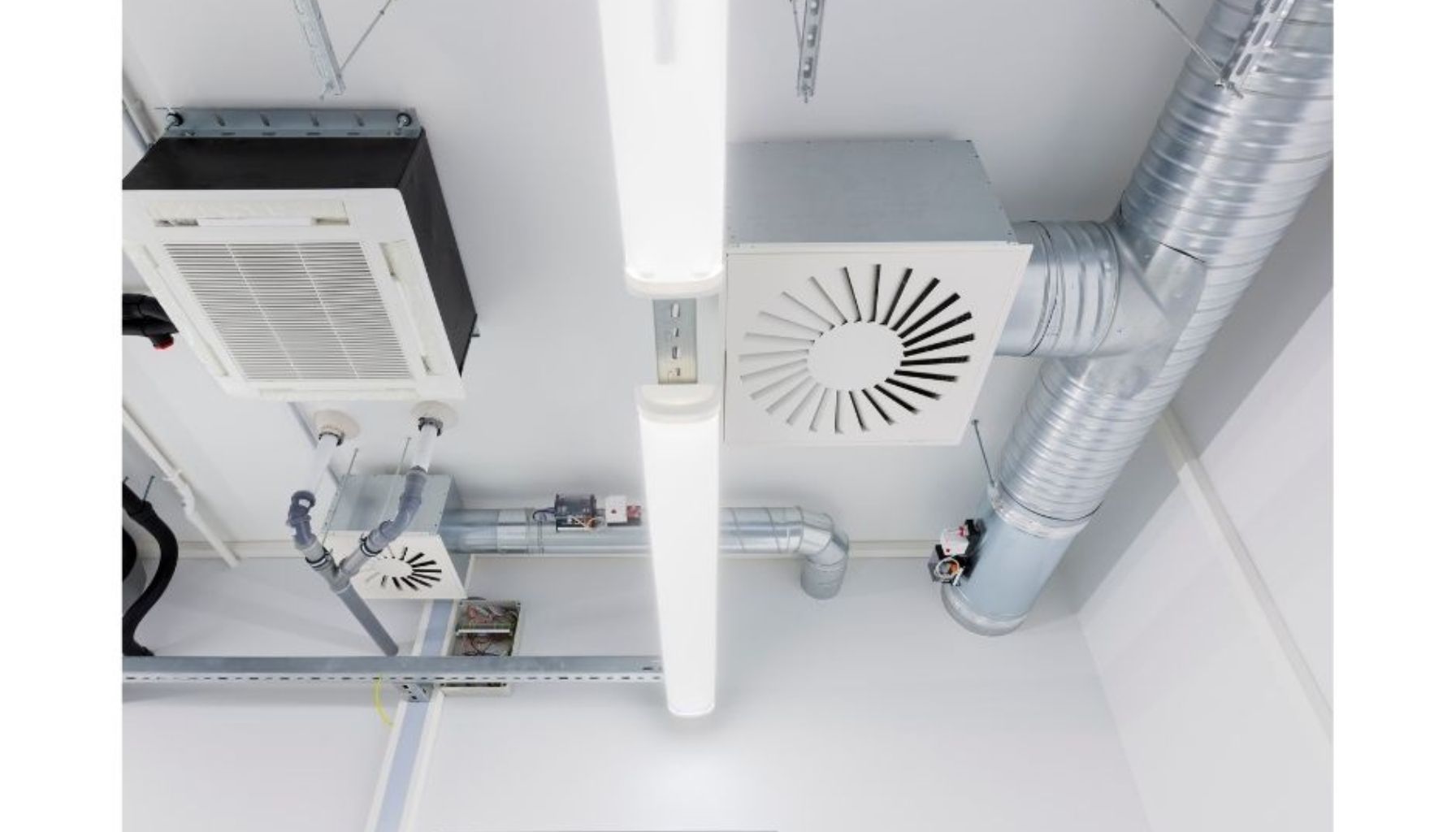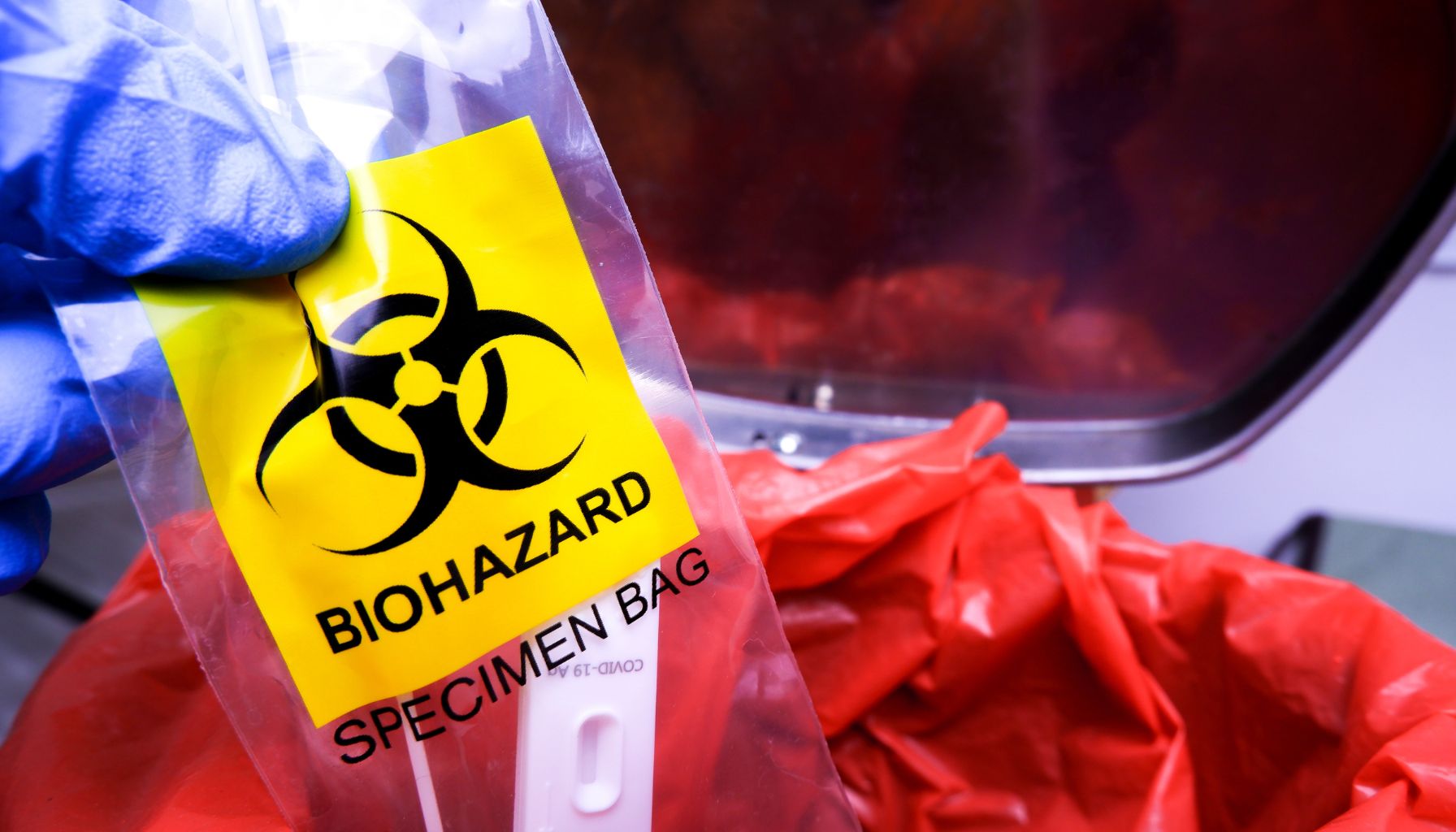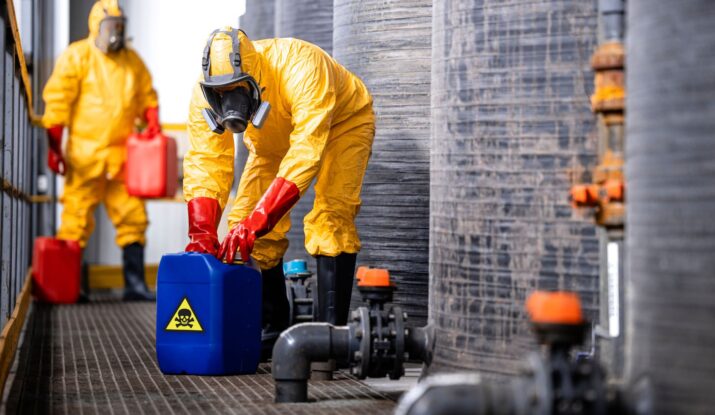What do you do?
Imagine this: you’re going about your daily routine, when suddenly you stumble upon a potentially hazardous situation right in the comfort of your own home. What do you do? Panic might be your initial reaction, but fear not! In this article, I will guide you through the crucial steps you need to take when encountering a biohazard in your home. By following these simple yet essential guidelines, you’ll be equipped to handle the situation with confidence and ensure the safety of yourself and those around you.

Assess the Situation
Evaluate the potential danger
When encountering a biohazard in your home, it is crucial to first assess the situation and determine the potential danger it poses. Look for any signs of contamination or hazardous materials that may be present. Consider the source of the biohazard and the severity of its impact on your health and safety. By carefully evaluating the potential danger, you can make informed decisions on how to proceed and ensure the necessary precautions are taken.
Identify the type of biohazard
Once you have evaluated the potential danger, it is important to identify the type of biohazard you are dealing with. Biohazards can come in various forms, such as bloodborne pathogens, chemical spills, or even mold growth. Understanding the specific nature of the biohazard will help you determine the appropriate steps to take in terms of cleaning, protection, and disposal. If you are unsure about the nature of the biohazard or its potential risks, it is recommended to seek professional help or guidance.
Ensure Personal Safety
Put on personal protective equipment (PPE)
Your personal safety should always be the top priority when dealing with a biohazard. Before taking any further action, ensure that you are wearing the appropriate personal protective equipment (PPE) to minimize the risk of exposure. This may include gloves, goggles, masks, or even full-body suits, depending on the nature of the biohazard. Always follow the manufacturer’s instructions for using and disposing of PPE properly.
Avoid direct contact with the biohazard
To prevent contamination or exposure, it is essential to avoid direct contact with the biohazard. This may include avoiding touching or coming into contact with any contaminated surfaces, liquids, or materials. If necessary, use tools or equipment to handle the biohazard from a safe distance. Remember, even a small amount of exposure can be potentially harmful, so take all necessary precautions to minimize contact.
Take necessary precautions to prevent inhalation or ingestion
In addition to avoiding direct contact, it is crucial to take necessary precautions to prevent inhalation or ingestion of the biohazard. This can be done by ensuring proper ventilation in the area to reduce airborne risks. If dealing with chemicals or hazardous substances, consider wearing a mask or respirator to filter out any potentially harmful particles. Additionally, avoid eating, drinking, or smoking in the area to prevent accidental ingestion of the biohazard.
Isolate the Area
Restrict access to the affected area
Once you have ensured your own safety, it is important to isolate the area where the biohazard is present. Restrict access to this area to prevent others from unknowingly coming into contact with the biohazard. Use physical barriers, such as tape or signage, to clearly indicate that the area is off-limits. By doing so, you reduce the risk of spreading the biohazard and protect the health and well-being of those around you.
Secure pets and children away from the biohazard
To further minimize the risk of exposure, it is crucial to secure any pets and children away from the area where the biohazard is present. They may be curious or unaware of the potential dangers, so it is essential to keep them at a safe distance. Consider confining pets to a designated area or room and ensuring children are supervised and kept away from the affected area until it is deemed safe.
Close doors and windows to prevent spread
To prevent the spread of the biohazard, be sure to close all doors and windows in the affected area. This will help contain any airborne particles or contaminants and maintain a controlled environment. By sealing off the area, you reduce the risk of cross-contamination and protect the rest of your home from potential exposure. Keep in mind that proper ventilation is still necessary to ensure a safe and breathable environment.
Contact Professional Help
Call a certified biohazard cleanup company
When encountering a biohazard in your home, it is advisable to contact a certified biohazard cleanup company. They have the expertise, specialized equipment, and knowledge to handle biohazards safely and effectively. Look for a reputable company that is experienced in dealing with the specific type of biohazard you are facing. They will be able to provide you with guidance and support throughout the entire cleanup process.

Inform them about the situation details
When contacting the biohazard cleanup company, provide them with as much information as possible about the situation. This includes the type of biohazard, the extent of the contamination, and any relevant details about the source or cause. By providing accurate and detailed information, the professionals can better assess the situation and come prepared with the necessary equipment and resources.
Follow their instructions until help arrives
After contacting the biohazard cleanup company, follow their instructions and guidance until help arrives. They may provide you with specific steps to take in order to minimize the risk of further contamination or exposure. It is important to listen carefully and follow their advice, as they are trained to handle biohazards and can help ensure your safety. Do not attempt to clean up the biohazard yourself unless instructed to do so by the professionals.
Follow Proper Cleanup Procedures
Wait for professional advice before attempting cleanup
While it may be tempting to start cleaning up the biohazard immediately, it is crucial to wait for professional advice before doing so. Cleaning up biohazards requires specialized knowledge and equipment to ensure proper containment and disposal. Improper cleaning procedures can lead to further contamination or exposure, putting your health at risk. Be patient and wait for the professionals to guide you through the cleanup process.
Use appropriate disinfectants and cleaning agents
Once you receive professional advice, use appropriate disinfectants and cleaning agents recommended by the biohazard cleanup company. Different biohazards require specific cleaning solutions to effectively neutralize and eliminate them. Follow the instructions provided by the professionals and ensure that you use the correct techniques and concentrations for the disinfectants. This will help ensure that the affected area is thoroughly disinfected and safe.
Dispose of contaminated materials correctly
Proper disposal of contaminated materials is critical to prevent the spread of the biohazard and protect the environment. Follow the instructions provided by the biohazard cleanup company for disposing of contaminated materials. This may involve double-bagging the waste, using leak-proof containers, or even arranging for a specialized waste disposal service. By following proper disposal procedures, you minimize the risk of exposing others to the biohazard and maintain a safe and clean environment.
Minimize Human Exposure
Keep a safe distance from the biohazard
Even after proper cleanup procedures have been followed, it is important to minimize human exposure to the biohazard. Keep a safe distance from the area where the biohazard was present and avoid unnecessary contact. This will help reduce the risk of any lingering contamination and ensure your continued safety. Remember, prevention is always better than cure, so take the necessary precautions to protect yourself and others.
Avoid unnecessary movement within the area
To further minimize human exposure, avoid unnecessary movement within the area where the biohazard was present. Limit access to the area as much as possible and avoid any activities that may generate airborne particles or disturb potential contaminants. By keeping the area as undisturbed as possible, you reduce the risk of reintroducing the biohazard and maintain a safer environment for everyone.
Ensure proper ventilation to reduce airborne risks
Proper ventilation is essential in reducing airborne risks associated with biohazards. Maintain adequate airflow in the affected area by opening windows or using fans to circulate fresh air. This will help dilute any airborne contaminants and reduce their concentration. However, be mindful of the potential spread of the biohazard and only ventilate the area after consulting with the biohazard cleanup professionals.

Properly Disinfect Affected Area
Follow recommended disinfection guidelines
To ensure the affected area is properly disinfected, it is important to follow recommended disinfection guidelines. These guidelines may vary depending on the specific biohazard you encountered. Different disinfectants and cleaning techniques may be required to effectively neutralize the biohazard and prevent its reoccurrence. Consult with the biohazard cleanup professionals or refer to official guidelines to ensure the correct procedures are followed.
Thoroughly clean surfaces and objects
When disinfecting the affected area, pay careful attention to thoroughly clean all surfaces and objects. Use appropriate disinfectants and cleaning agents to remove any visible traces of the biohazard. Focus on high-touch areas such as doorknobs, countertops, and light switches. It is essential to be meticulous during the cleaning process to minimize the risk of any residual contamination.
Use disposable materials whenever possible
To further minimize the risk of cross-contamination, it is recommended to use disposable materials whenever possible. This includes disposable gloves, wipes, and cleaning cloths. After use, properly dispose of these materials as instructed by the biohazard cleanup professionals. Avoid reusing any cleaning tools or materials without proper decontamination, as this can potentially spread the biohazard to other areas.
Handle Biohazard Waste
Dispose of waste in accordance with local regulations
Proper disposal of biohazard waste is crucial to maintain a safe and healthy environment. It is important to dispose of the waste in accordance with local regulations and guidelines. Contact your local waste management authorities or consult with the biohazard cleanup professionals for specific instructions on how to handle and dispose of the waste. Improper disposal can lead to environmental contamination and pose risks to public health.
Bag and seal contaminated items securely
When handling biohazard waste, it is essential to bag and seal contaminated items securely. Use durable, leak-proof bags that are specifically designed for biohazardous materials. Double-bagging is often recommended as an extra precaution to prevent any potential leaks. Be sure to follow the proper sealing techniques to ensure that the waste is safely contained and prevent any accidental exposure.
Label the waste as biohazardous material
To ensure proper handling and disposal, it is vital to label the biohazard waste as biohazardous material. Clearly mark the bags or containers with appropriate warning signs or labels, indicating the nature of the biohazard. This will help ensure that anyone who comes into contact with the waste is aware of its potential risks and can take the necessary precautions. Proper labeling is a responsible practice that helps protect the safety of waste management personnel and others.

Follow Up with Medical Attention
Seek medical advice if exposure or injury occurred
If you or anyone else has been exposed to the biohazard or sustained any injuries during the incident, it is crucial to seek medical advice. Contact your healthcare provider or visit a medical professional to assess any potential health risks or need for treatment. Prompt medical attention can help mitigate any adverse effects and ensure your well-being.
Provide detailed information to healthcare professionals
When seeking medical attention, provide healthcare professionals with detailed information about the biohazard exposure or incident. Explain the nature of the biohazard, how the exposure occurred, and any symptoms or abnormalities you may have experienced. This information will assist medical professionals in accurately assessing the situation and providing appropriate care or guidance.
Monitor for any symptoms or changes in health
Even if you do not immediately experience any symptoms, it is important to monitor your health for any changes or potential effects caused by the biohazard exposure. Some symptoms may have delayed onset, so it is essential to remain vigilant and report any abnormalities to your healthcare provider. Early detection and intervention can significantly impact your recovery and overall well-being.
Take Preventive Measures
Learn about proper handling of biohazards
To mitigate the risk of encountering a biohazard in the future, it is crucial to learn about the proper handling and prevention of biohazards. Educate yourself about the different types of biohazards that may be present in your home or environment. Familiarize yourself with the appropriate safety precautions, personal protective equipment, and cleaning techniques. By being aware and informed, you can proactively protect yourself and others from potential biohazard risks.
Implement preventive measures to reduce risks
Prevention is always better than dealing with a biohazard incident. Implement preventive measures to reduce the risks of biohazard exposure in your home. This may include regular cleaning and disinfection routines, proper storage and disposal of hazardous materials, and maintaining good hygiene practices. Consider installing appropriate safety features, such as smoke detectors or carbon monoxide detectors, to prevent potential biohazard incidents.
Educate family members about biohazard safety
Lastly, it is important to educate your family members about biohazard safety. Ensure that everyone in your household is aware of the potential risks, proper handling procedures, and necessary precautions to take in case of a biohazard incident. Teach them how to recognize warning signs and the importance of prompt reporting. By fostering a culture of biohazard safety within your home, you can collectively minimize the risks and promote a healthier living environment.
Encountering a biohazard in your home can be a concerning and potentially hazardous situation. However, by following the steps outlined in this article, you can effectively assess the situation, ensure personal safety, and take appropriate measures to handle the biohazard safely. Remember, if you are unsure or overwhelmed, do not hesitate to seek professional help. Your health and well-being should always be the top priority when dealing with biohazard situations.
Contact PureOne Services Now
Disclaimer: All PureOne Services locations do not hold all of these listed certifications.



